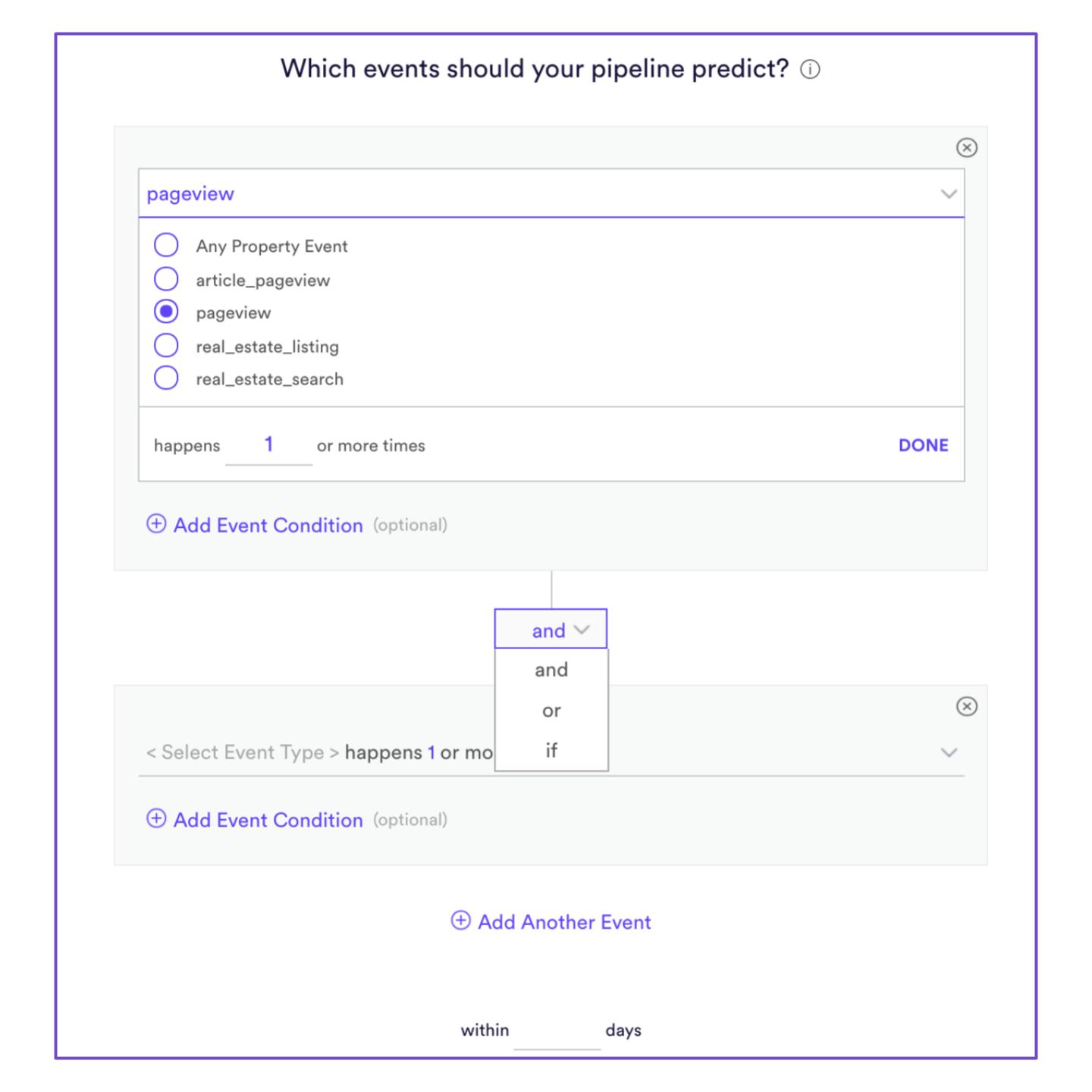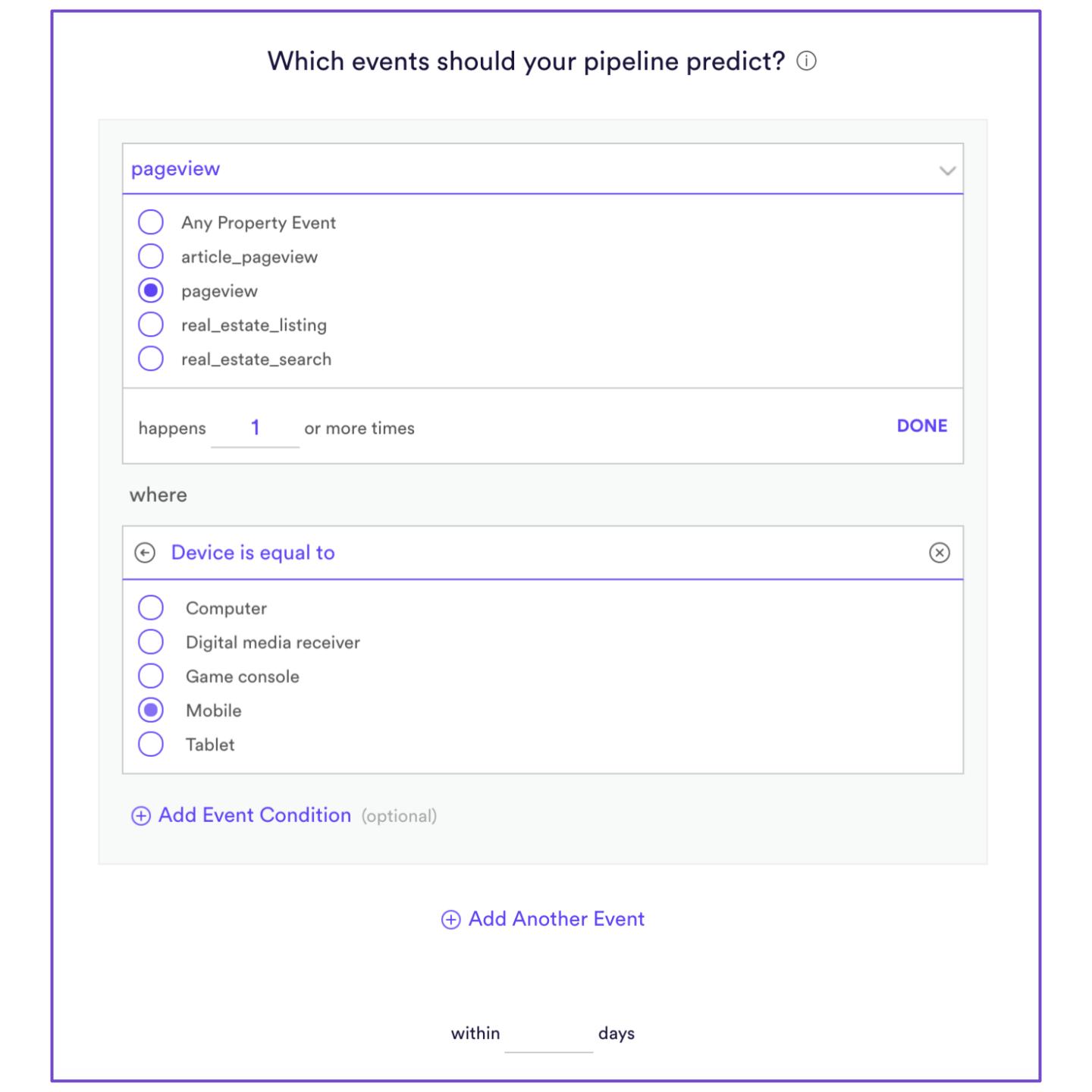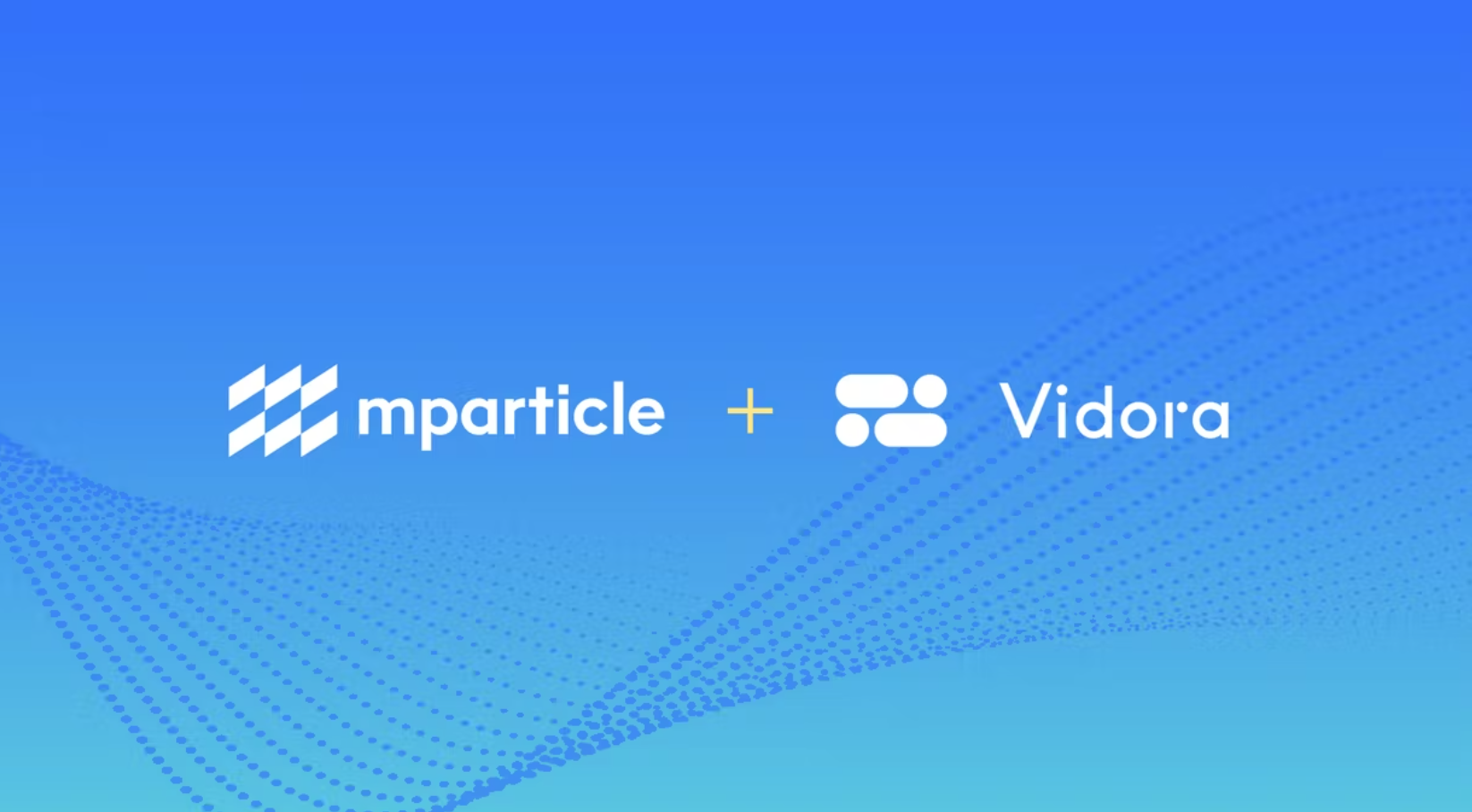
In most machine learning models (specifically supervised machine learning models) a goal is set by a Cortex user and the machine learning system will generate predictions for that goal.
For instance the goal might be to predict “who will purchase 2 sweaters in the next 10 days” or “which users have the most similar behavioral patterns to this set of CEOs”? The machine learning system will generate commensurate predictions for “the likelihood of users purchasing 2 sweaters in the next 10 days” and “the likelihood of an anonymous user being similar to a CEO”.
Vidora Cortex and Goal Setting
In Cortex, we wanted to make goal-setting as simple as possible by enabling our users to specify goals with only a few clicks. At the same time we wanted to enable our users to specify complex goals which align with the unique goals of their particular business.
 Screenshot from Cortex where the user can specify a particular goal. Note that Cortex offers users the ability to specify complex business goals with a few clicks.
Screenshot from Cortex where the user can specify a particular goal. Note that Cortex offers users the ability to specify complex business goals with a few clicks.
New Goal-Setting Features in Cortex – Conditional Goals
As our customers continue to expand their usage of Cortex, new, more complex goals are needed to satisfy increasing numbers of business use cases. Recently Vidora added the ability to specify “conditional goals” within Cortex. Conditional goals are actually a very common use case for businesses and essentially specify a goal of the form “count the number of events if another event happens”.

Cortex screenshot of the new conditional goal feature in Cortex as specified by the “if” condition.
Conditional Goal Use Cases
Here are a few examples of conditions goals we have seen from our customers –

Why Conditional Goals are Really Important for Businesses
Conditional goals are critical for obtaining high performing models in many use cases. Let’s consider the first example of optimizing for CTR on an ad campaign. Let’s also consider if the Cortex user did not have the ability to specify a condition (in this case the condition is that the user was shown an ad first). In this case, the Cortex user would likely optimize for “user clicks on an ad in the next 7 days”. The resulting model would likely start to latch on to “user activity” as the most active users on the platform would have the highest chance of clicking on the ad.
As a result, instead of learning which users are most interested in a particular ad, the model would simply learn who has the most opportunity to click the ad which would tend to be the users who are most active on the platform. In general, conditional goals allow you to prevent the model from biasing towards users who have more opportunity to do an action (in this case users who are simply more active). Net-net, conditional goals are really important here for driving the right predictions.
Tying it All Together
Goal setting is one the most important aspects of building machine learning models. Cortex makes it very easy for users to specify a particular goal with a few clicks. Cortex’s new conditional goal setting enables users to build even more accurate predictions for some common use cases across marketing and product.
Want to learn more about goal setting or conditional goal setting? Email us at partners@vidora.com.


